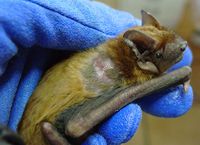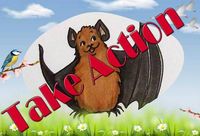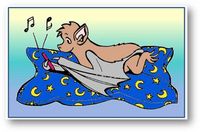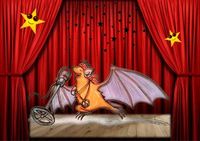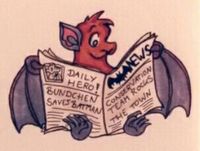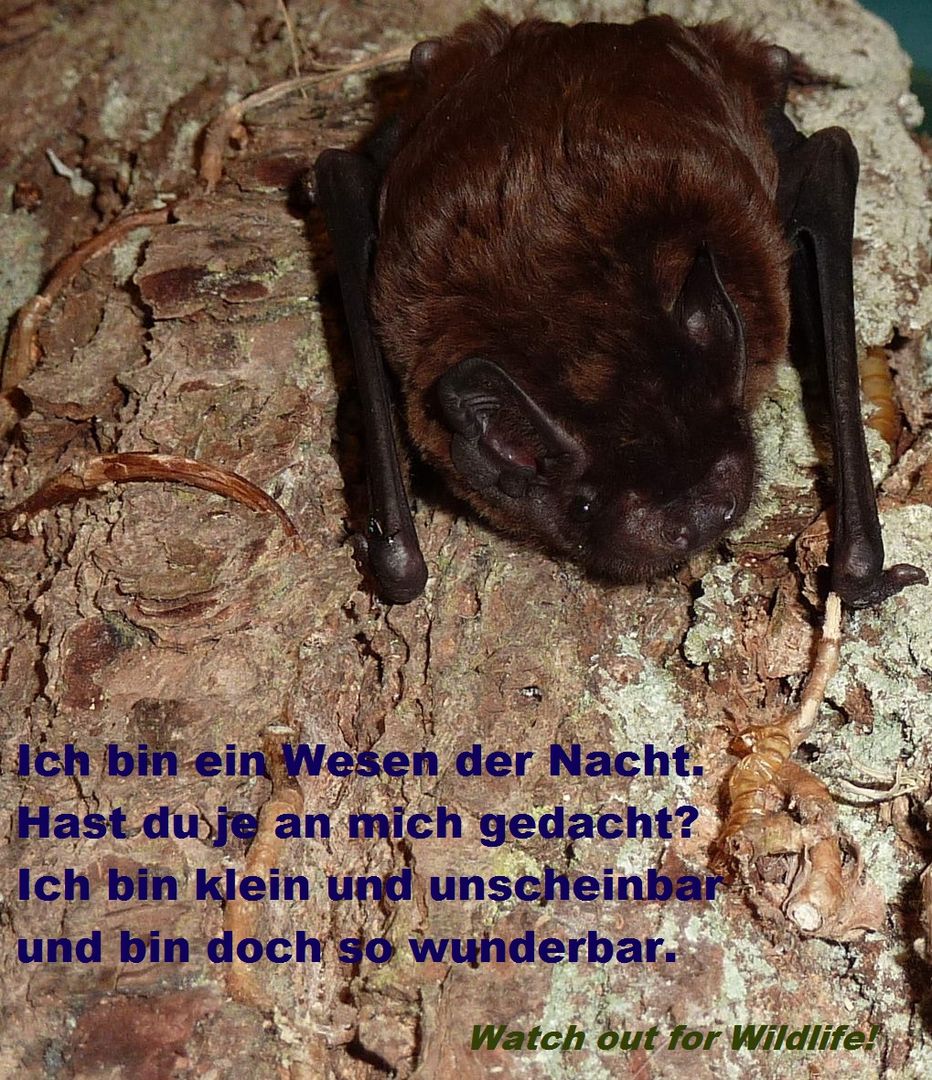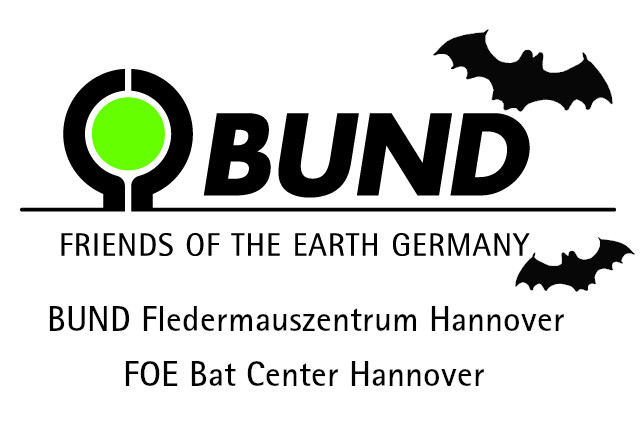
Babies-releasing of Pipistrellus pipistrellus and Pipistrellus pygmaeus
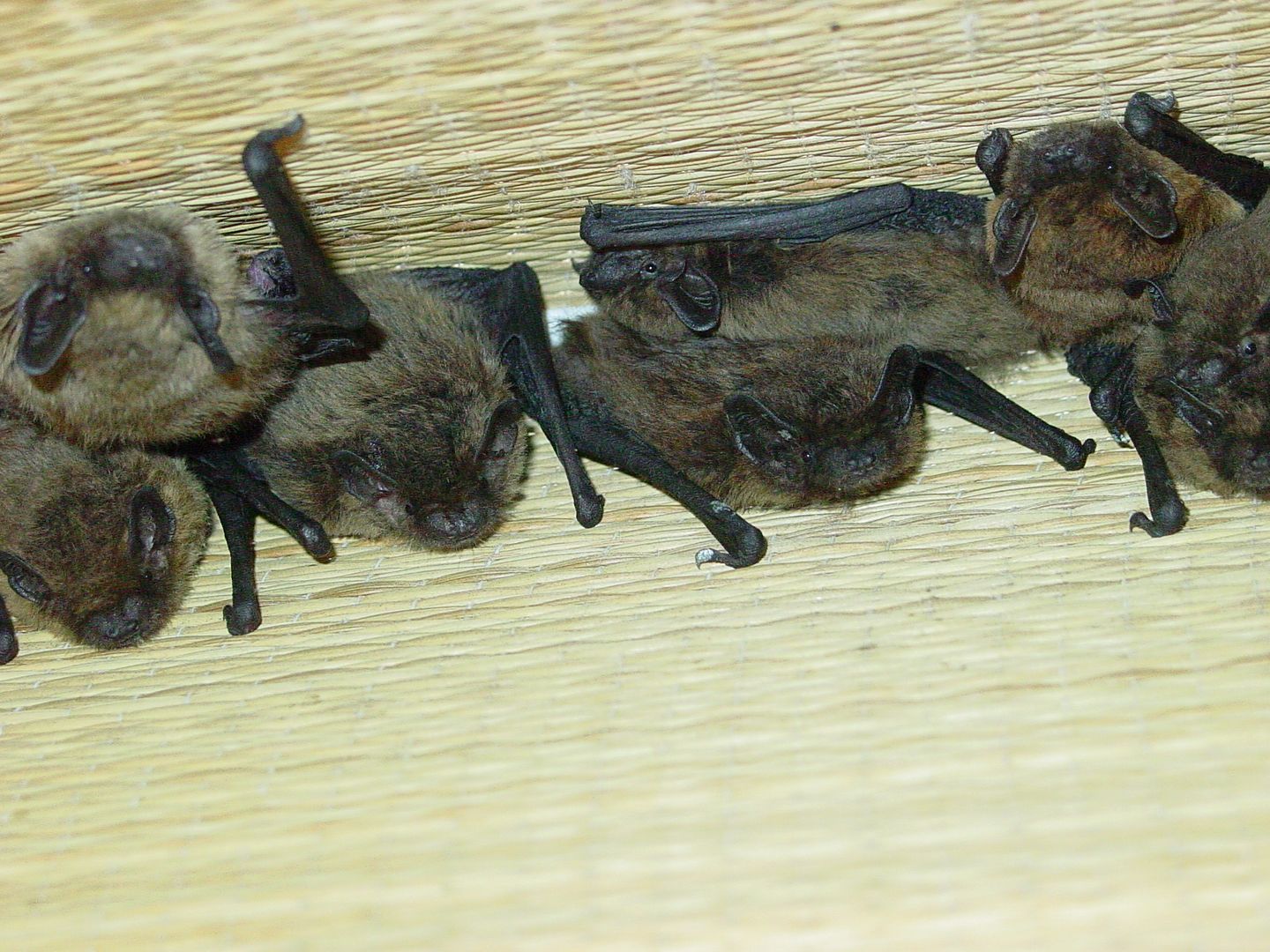 Gruppe Zwergfledermäuse // group of Pipistrellus pipistrellus
(Dr. Renate Keil
/
www.bund-fledermauszentrum-hannover.de)
Gruppe Zwergfledermäuse // group of Pipistrellus pipistrellus
(Dr. Renate Keil
/
www.bund-fledermauszentrum-hannover.de)
The Pipistrellus pipistrellus and Pipistrellus pygmaeus who were brought as orphaned babies to our bat station were there looked after by the vet Dr. Keil and the team to prepare the bats for a life in freedom.
This preparation involves first the initial examination of the juveniles, accommodation in terrariums, the removal of parasites, then the daily care, the beginning of specialty milk feeding in 2-3 hour intervals, regular medical checks and at advanced age the flight training. Every little one has also been taught to eat mealworms independently from the bowl. This is necessary because when they will be released they need to take independently additional mealworms out of bowls in the releasing boxes to cover the missing hunt success in their first two weeks of hunting training (normally they get additional milk from their mothers. Although the hunting is innate, but it must be practiced by the subadults.
After learning the independent feeding from the bowl the young bats were placed in the outdoor aviary to familiarize themselves with the surroundings of the local conditions (optical and acoustic).
There they were all kept together in the aviary so that they could get to know each other and already could form larger groups, which corresponds to the natural behavior of the animals living in colonies. At the age of 4-5 weeks, the daily flight training that was monitored with nightly inspections, began. The successful bats were labeled with nail polish on the thumb claws and when the flight training was a couple of days in a row successful the subadult bats were set in groups in one of the open releasing boxes that are located right next to the their aviary. This happended at a time with good weather conditions in August. In the releasing boxes the animals were still supported with food and water. In the evening the flight excursions of the animals were observed and tracked by detectors. On the following day the animals returned to the releasing boxes and were controlled by our vet. The animals have taken the extra food / water supply in the releasing boxes. Especially in the first two days the empty bowls and large amounts of droppings in the boxes indicated that the hunting success was probably still very low. The other nights were just procedural. From day to day the animals took less food from the station, because their hunting success was getting better. In different bat quarters next to the aviary the bats hat many possibilities to find a sleeping place for the day. At night the little ones often flew around the aviary, probably they heard the bats which where not released at that time – this could be an important guidance.
Meanwhile, the subadult bats are independent. They are still frequently heard at night.
A total of 73 young bats could be released in 2015. All bats were carefully marked with nail polish at the thump claws. This innocuous marker holds up to several weeks. So far there has been no live or dead animals found who had the mark, so that the realsing was successful and the bats are now living wild and free.
The bats who did not fly well enough to get released this year, will be trainined again and again so that they can make it to freedom next year. The releasing later this year is not possible, because the time until Winter comes would be too short fort he little ones for hunting exercises and finding colony connection and winter quarters
We thank Hoppe-Behncke-Stiftung for the support of the project.
(Dr. med. vet. Renate Keil)


